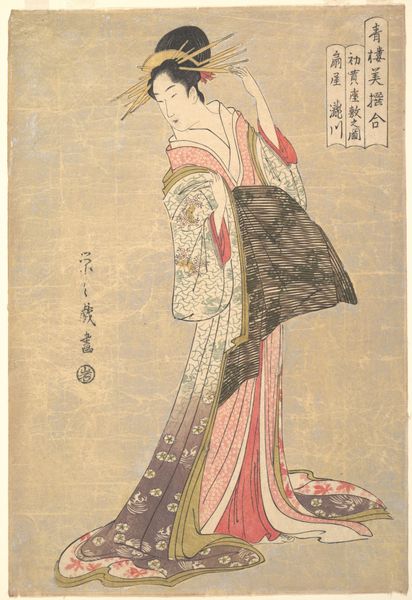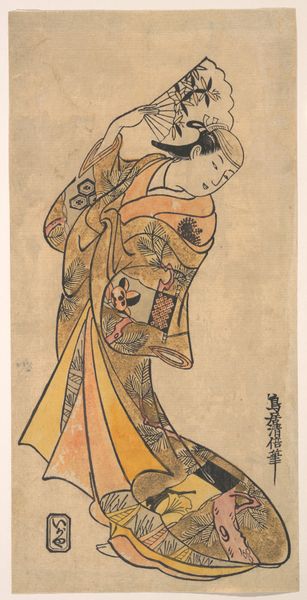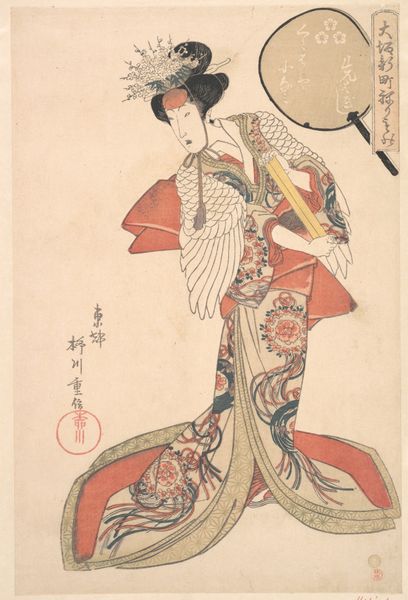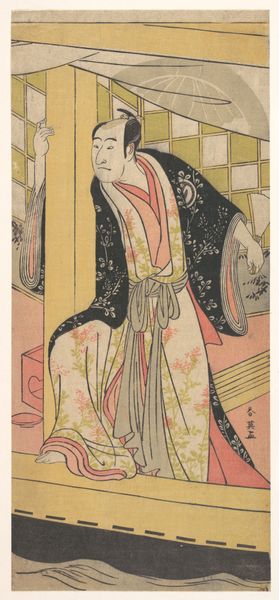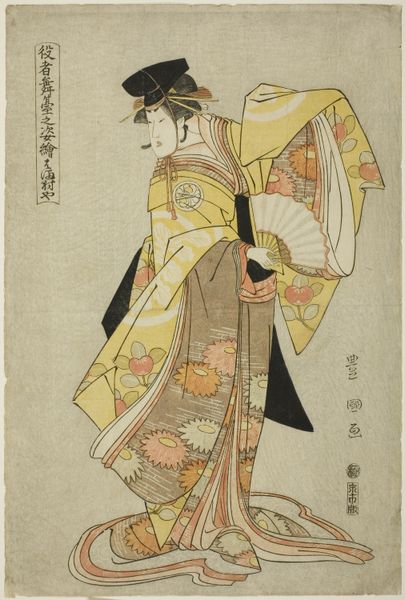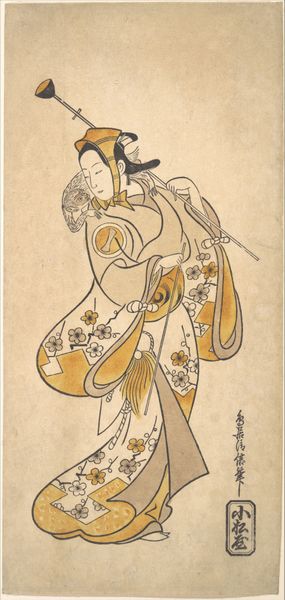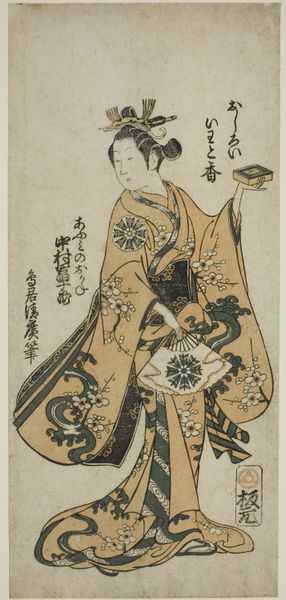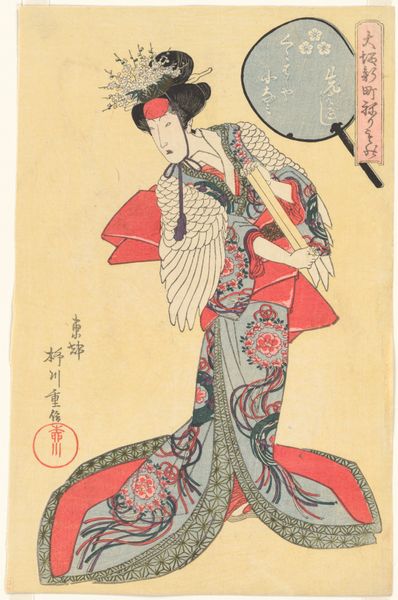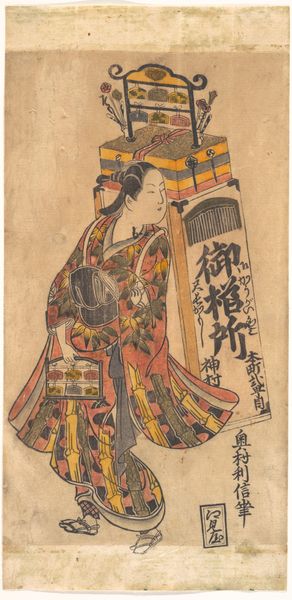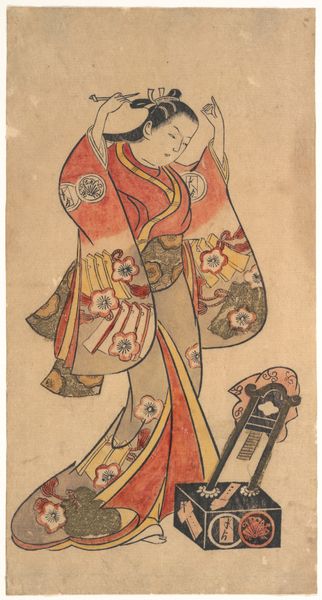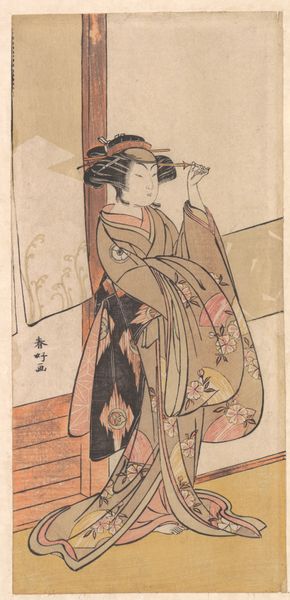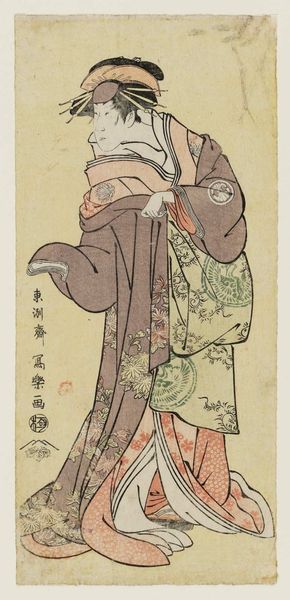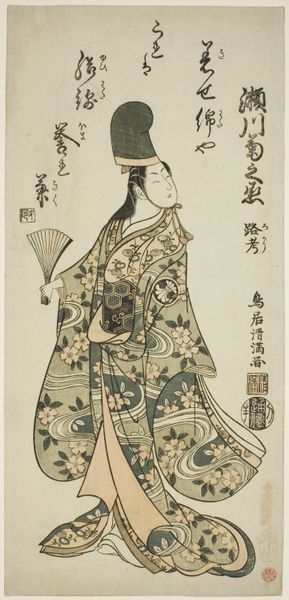
print, woodblock-print
#
portrait
#
ink drawing
# print
#
asian-art
#
ukiyo-e
#
figuration
#
intimism
#
woodblock-print
#
men
#
genre-painting
Dimensions: 13 1/4 x 6 1/8 in. (33.7 x 15.6 cm)
Copyright: Public Domain
Editor: So, this is Nishimura Shigenaga's woodblock print, "The Actor Arashi Wakano," dating roughly from 1728 to 1748. The colors are quite striking, and the figure almost seems to float. What strikes you when you look at this, what layers are visible? Curator: Immediately, I see a deliberate construction of identity through layered symbols. The actor, the umbrella, even the plum blossoms – each speaks to specific cultural values and desires. Do you notice how the kimono itself acts as a narrative tapestry, adorned with miniature scenes? Editor: Yes, those tiny figures! They look like other actors, perhaps? Curator: Possibly. They reflect the actor's public persona, echoing stories and roles that resonate with the audience. Think of the umbrella: more than just protection from the elements, it signifies status, taste, and even a veiled sensuality in its delicate form. It reminds me of certain Buddhist protectors holding a parasol. What kind of emotion is elicited? Editor: A sort of controlled power, maybe? There's definitely a sense of performance, even off stage. It's also a peek into daily life. Curator: Exactly! Ukiyo-e prints like these served as cultural mirrors. The choice of plum blossoms, symbols of resilience and renewal, layered over the persona of Wakano allows us to understand more about the values held up in society. Each element allows us to understand the continuity of art within historical memory. What can we infer when understanding art is like this? Editor: It all comes together to paint a portrait, not just of a man, but of an entire cultural landscape! Curator: Precisely! This woodblock becomes a potent mnemonic device that continues to reveal layers of meaning over time.
Comments
No comments
Be the first to comment and join the conversation on the ultimate creative platform.
